 Drop (or dropped) foot is common after stroke. Every stroke is different, and so are its side effects. Some stroke survivors may face different types of paralysis and others might only deal with a slight speech impairment. Either way, all stroke survivors should be aware of the possible side effects of stroke, and foot drop is one of them.
Drop (or dropped) foot is common after stroke. Every stroke is different, and so are its side effects. Some stroke survivors may face different types of paralysis and others might only deal with a slight speech impairment. Either way, all stroke survivors should be aware of the possible side effects of stroke, and foot drop is one of them.
This condition is related to high degrees of motor impairment, weakness or lack of voluntary control of your ankle dorsiflexors and increased spasticity of plantar flexors.
Foot drop interferes with the initial foot contact at the beginning of the stance phase and hinders ankle dorsiflexion during the swing phase of gait.
This changes the way you walk (it contributes to disruption in weight acceptance and weight transfer, reduces walking speed, efficiency and stability of gait), which in turn hinders your ability to complete everyday tasks and increases your risk of falls.
You may never recover completely from this very significant limitation, as with many effects resulting from stroke.
But it’s possible to learn, and create, some incredible combinations of strategies to manage this problem. An ARNI instructor can help you with this.
The severity of your condition will dictate your requirements, but if you have this difficulty, you may need an ankle-foot orthosis (AFO). This kind of splint lifts your toes and supports your ankle so that you can put your weight through your leg when you stand. It then prevents you from catching your toes when you walk. By the time you emerged from the hospital you may well have been wearing an ‘off-the-shelf’ one or a custom one produced by the orthotics department.
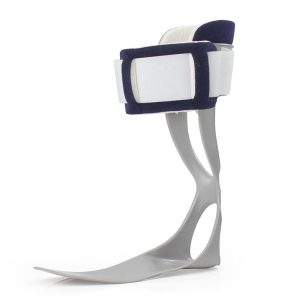
A rigid plastic AFOs is intended to keep you safe, and by and large, it will. It will help keep your foot in place so that you can move safely. But unfortunately, there’s some downsides to using an AFO. One known side-effect is that prolonged use can possibly guide you into ‘learned non-use’ of the muscular structures of lower leg after a while. This pattern of non-engagement occurs because you don’t have to work hard at a whole host of things such as maximal knee lift, actively engaging your hamstrings, beating circumduction, heel-striking, minimising ‘slappage gait’ and preventing ‘foot roll’.
However, an AFO may be the very best thing to help mobilise you. Wear one while you retrain, by the way, especially at first. For most, an AFO works in order to keep you safe if you have dropped foot, but the big secret to AFO is that you’ve got to actively minimise their use over time. This will help you slowly start to outgrow the need for one. Or outgrow the need for one which is quite so supportive.
How you’ll potentially regain independence and minimise the negative effects of foot drop, certainly insofar as to mobilise well?
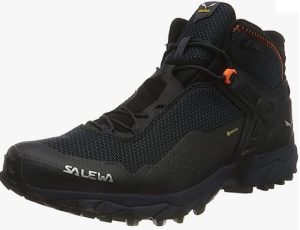 A Dr Tom solution (!) (for select survivors of course, but this can be ‘tweaked’ per survivor to end up as ‘big, generalisable concepts for most survivors), goes like this (and do ask a therapist or trainer to add to the below as they see fit):
A Dr Tom solution (!) (for select survivors of course, but this can be ‘tweaked’ per survivor to end up as ‘big, generalisable concepts for most survivors), goes like this (and do ask a therapist or trainer to add to the below as they see fit):
Re-training (repetitive walking practice plus appropriate strength training) PLUS a support/brace (as advised/applied by a therapist as appropriate AND how gradually to minimise their use if/as appropriate) PLUS techniques/strategies PLUS supportive footwear like neutral/under-pronator trainers and others.
Trainers? Yes. Most people have NO idea how much of a difference supportive shoes/trainers make after stroke. If you have any questions, ask me and I’ll do my best to answer, refer to the evidence and/or ask an expert colleague.
See my personal current ‘fave’: (I’ve had 3 pairs of these now: Salewa Trail Shoes ; they last for ages). Very expensive, yes, but these can make THE difference (although for a lady, they are hardly a delicate shoe!) for you. Experiment. These ones for instance seriously HELP with drop foot – and have Michelin Technical Performance soles, which is great. The ‘special rubber compound and design with selected grooves and studs ensures exceptional traction and stability on hard, uneven terrain’. Yes please.
The trick is that, as you put in the hard work and do more and more mobilisation, over time you might be able to graduate to a less obtrusive AFO brace or support.

You’ll need to buy and try these to work out which one suits you best. The best ones now are hinged and/or flexible. Some are made of carbon fibre. A new-to-the market support used by a number of my patients is the Turbomed FS3000 AFO.
Many survivors, over time, however want to find a very minimal and unobtrusive ‘stealth’ type of support, having worked out that the more minimal support they give to their foot, the harder they have to work in order to cope (which stimulates neuroplasticity massively). They may find a ‘figure-of-eight’ type support useful, with permission/advice/guidance from a therapist.
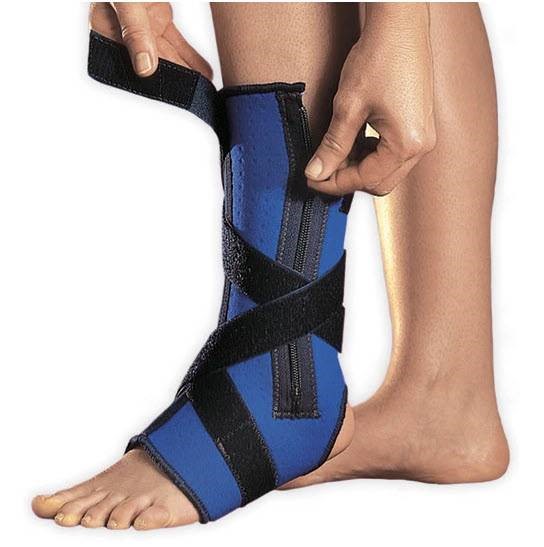
The ProMedics Lincoln Ankle Brace is a good example of one of such a support, and when I needed it, it worked for me too. I have residual dropped-foot so I know whereof I speak!
Btw, be careful if ordering/considering this particular brace/support, as the company have taken to pulling the strap as a seam from around the underside, rather negating its efficacy. Ask for the older version shown here (I’m fairly sure they can find old stock or just custom-make it for you).
Avoid any brace with a lumpy seam running along the bottom of it; this won’t be fun to walk on for long periods during the day. A tip is to wear a close-fitting sock between your skin and the brace or support to ensure comfort and help prevent rubbing.
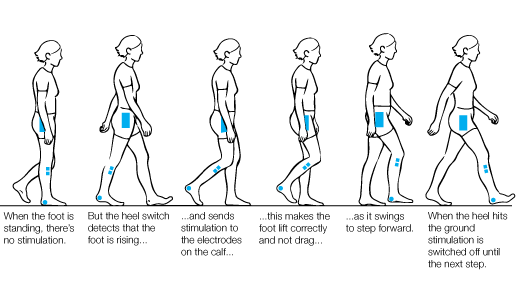
Another support which works well is a Silicone Ankle Foot Orthotic. The Ottobok SAFO is a good example. A SAFO supports your foot not from below, but across the arch of the foot from above, in order to prevent the foot from dropping. The advantage of this principle is that because of the thin, flexible sole, you can feel the ground conditions directly and detect uneven surfaces such as stones and doorsteps. The result can be enhanced safety and self-confidence when walking.
Functional Electrical Stimulation (FES) for drop foot management reveals consistently in the evidence to be more effective than using an AFO. It can improve ankle dorsiflexion, balance, and functional mobility, especially when combined with physiotherapy. But we don’t know what the results are for users over the long term as far as users becoming reliant on the FES technology.
It is known that FES devices that have been fitted correctly in a specialist centre can enable patients to learn to walk correctly and go some way to minimising muscle wastage. Implantable FES devices have been available for many years also.
PLEASE write below to help others who are considering using orthotics and/or FES for drop-foot. Or any other helpful suggestions you’ve found work well for you! Many thanks, Tom


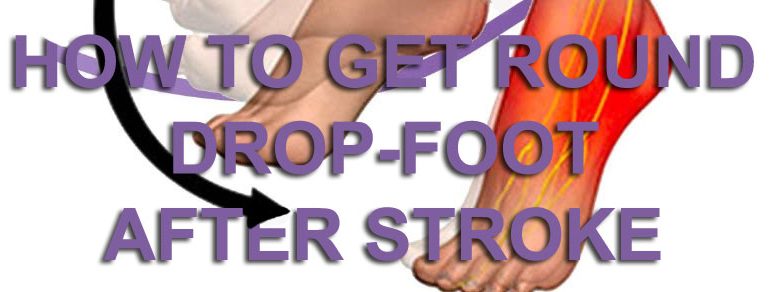

One Comment
Hi – wish I could supply a useful comment but I can’t. Do you mind if I ask a question? My foot drop has resulted in the fourth toe my left foot becoming clawed and a corn forming under the nail of that toe. No luck with podiatrists completely removing and my research implies it’s there for good. So painful and makes my gait so awkward. Orthopaedic surgeon has suggested cutting the tendon of that toe and I’m so apprehensive of this. Would you advise this as helpful Tom? I think I’ll end up with a floppy toe plus the corn. His advice is that it will remove the pressure on the toe.